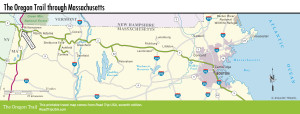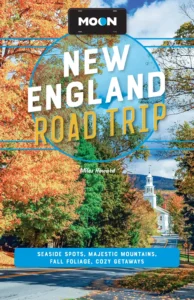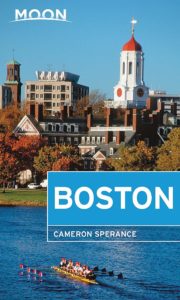Quincy and Plymouth
Quincy
South of Boston, Route 3 reemerges from the I-93 freeway at Quincy (pop. 94,580), home of the Adams family, the political dynasty that helped shape the early republic. John Adams (1735-1826) signed the Declaration of Independence, served as a diplomat during the Revolutionary War, helped negotiate the Treaty of Paris, then returned home to become George Washington’s vice president and successor. His son, John Quincy Adams (1767-1848), served as president from 1825 to 1829. Rather than quit politics after losing the election in 1828, he returned to Washington, serving in the House of Representatives for the next 16 years. The rather modest houses where both men were born, plus a nice garden and a historic church, are preserved as part of the Adams National Historic Site (1250 Hancock St., 617/770-1175, daily, $105), which covers 13 downtown acres starting at a visitors center.
More recently, Quincy has been home to the truly huge Fore River Shipyard. This dense forest of cranes, derricks, and scaffolding rises along the south side of the 1930s Fore River Bridge, along Route 3A at the south edge of town.
Plymouth
Although the Pilgrims are often given credit for establishing the first permanent European settlement in what later became the United States, they arrived a dozen years after other English settlers established Jamestown, Virginia. There’s even less evidence to back up the story of Plymouth Rock, the supposed landing site of those weary Mayflower passengers back in 1620, but like the Liberty Bell and Mt. Rushmore, it’s something every red-blooded American tourist has to see.
Now protected by a neoclassical granite portico and inscribed with the date 1620, Plymouth Rock is right on the waterfront, off Water Street at the south end of North Street in Plymouth. The rock is part of pleasant Pilgrim Memorial State Park, which also includes the Mayflower II (daily Apr.-Nov., $28), a replica of the Pilgrims’ ship, where an onboard exhibit describes the Pilgrims’ two-month transatlantic journey. The Mayflower is about the only sign of Plymouth being a potential tourist trap; the whole place is actually fairly low-key, with a couple of gift shops and snack bars across from the rock. Two blocks inland, downtown Plymouth looks like any other pleasant New England suburb, with no tacky T-shirt shops to be found.
Two miles south from Plymouth Rock along Route 3A, or off the Route 3 freeway at exit 5, Plimoth Plantation (508/746-1622, daily, $28) is a living history re-creation of the original Pilgrim colony and features costumed interpreters taking part in planting, harvesting, and other daily chores.
Map of the Oregon Trail Route in Massachusetts

















